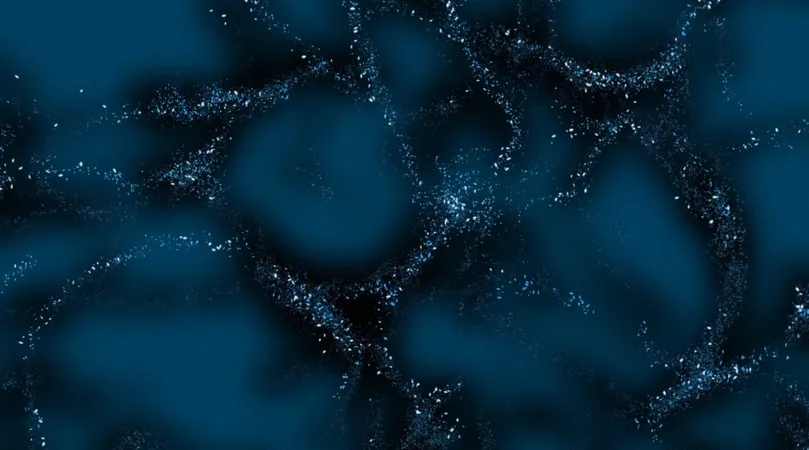
Unlocking the Secrets of the Moon: Tiny Orange Beads Hint at Explosive Eruptions
2025-06-17
Author: Amelia
Ancient Beads Unveil the Moon's Volcanic History
Tiny orange beads, each measuring less than 1 mm, may hold the key to understanding the Moon's fiery past. These remarkable artifacts formed between 3.3 and 3.6 billion years ago during turbulent volcanic eruptions on the surface of the then-immature satellite. Ryan Ogliore, an associate professor of physics at Washington University in St. Louis, describes them as some of the most extraordinary extraterrestrial samples we possess, calling them "pristine capsules of the lunar interior."
A Technological Breakthrough in Lunar Research
Thanks to advanced microscopic analysis techniques unavailable during the Apollo missions, Ogliore and his dedicated team have scrutinized these lunar beads like never before. Their groundbreaking findings were recently published in the scientific journal Icarus, with major contributions from researchers Thomas Williams, Stephen Parman, and Alberto Saal from Brown University.
Cutting-Edge Tools for Unprecedented Insights
Employing the NanoSIMS 50, a sophisticated instrument that utilizes high-energy ion beams for analysis, the researchers have spent decades uncovering the mysteries of interplanetary dust, presolar grains, and other cosmic debris. By integrating various advanced techniques—including atom probe tomography, scanning electron microscopy, transmission electron microscopy, and energy dispersive X-ray spectroscopy—they were able to gain an unparalleled view of these ancient lunar artifacts.
Each Bead Tells a Story of Lunar Violence
Every glass bead unravels tales of the Moon's violent history. Ranging from shiny orange to glossy black, these beads formed as lunar volcanoes hurled material from the depths to the surface, where the molten lava crystallized in the freezing vacuum of space. Ogliore likens the explosive eruptions to the spectacular fire fountains of Hawaii, revealing that these beads' distinct color and chemical makeup are unlike anything found on Earth.
Preserving Lunar Secrets in a Reactive Atmosphere
To ensure accurate analysis without contamination from Earth's atmosphere, the researchers meticulously extracted beads from the core of lunar samples, shielding them from exposure to air throughout the entire study. Despite using highly sophisticated techniques, Ogliore admits that the measurements posed significant challenges.
A Glimpse into the Moon's Volcanic Evolution
The minerals and isotopic compositions found on the beads serve as indicators of the varying pressure, temperature, and chemical environments of lunar eruptions from 3.5 billion years ago. The revelations surrounding the orange and black beads suggest a transformation in volcanic activity over millennia, making the study akin to reading the ancient journal of a lunar volcanologist.
As technology continues to evolve, who knows what other secrets these tiny lunar beads might reveal?









 Brasil (PT)
Brasil (PT)
 Canada (EN)
Canada (EN)
 Chile (ES)
Chile (ES)
 Česko (CS)
Česko (CS)
 대한민국 (KO)
대한민국 (KO)
 España (ES)
España (ES)
 France (FR)
France (FR)
 Hong Kong (EN)
Hong Kong (EN)
 Italia (IT)
Italia (IT)
 日本 (JA)
日本 (JA)
 Magyarország (HU)
Magyarország (HU)
 Norge (NO)
Norge (NO)
 Polska (PL)
Polska (PL)
 Schweiz (DE)
Schweiz (DE)
 Singapore (EN)
Singapore (EN)
 Sverige (SV)
Sverige (SV)
 Suomi (FI)
Suomi (FI)
 Türkiye (TR)
Türkiye (TR)
 الإمارات العربية المتحدة (AR)
الإمارات العربية المتحدة (AR)